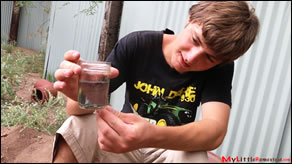
Building an Inexpensive Water Filter
Slow Sand Filter
For fun we thought we would build a Slow Sand Filter. We then discovered a way we could make good use of it - Attaching it to our rain water catchment system. We now can take our slimy, yucky rainwater from our rainbarrel, filter it, and pump it into our water storage tank for household use. This supplements our well water during the time when the well pump has the hardest time finding water. I have to admit though that we bring in all our cooking and drinking water - not ready to believe in it enough to drink it :)
Watch & then check out the very informative comment below from YouTuber, Mark Edwards:
Results
The verdict is still out for how effective it will be supplementing our potable water. It is slow but so far, we are happy to get any extra water we can get :)
Valuable Comment From Youtube
- by Mark Edwards
Great project. This is a natural system hynbridised, and is of course, exactly the same principle as collecting water from an old fashioned well, which used many meters of soil, rocks etc as a filtration system. The system depends on a build up of micro-organisms, and bacteria which build up in the system which literally eat any pollutants / debris which reside in the untreated rainwater. It is very important to allow a 2 to 3 week period for the necessary bacteria to build up in your sand / substrate filter. They will grow and multiply organicaly as soon as you start passing water through the system. One of the beauties of the system is the more water you pass through = the more pollutants there are for the bacteria to eat = the larger the bacterial community. Nature at its best ! Charcoal or carbon is extremely efficient at this process because it is microporous and has an enormous equivalent surface area for the bacteria to reside, and because of its microporous nature will trap much of the inorganic particles that the bacteria cannot eat. The downside with carbon is that it eventually becomes clogged with inorganic particles and needs replacing. However, on the upside, it is very easy to produce at home by making charcoal, which is pure activated carbon. Also, do not forget to include into the system a method of collecting the sludge which will collect at the bottom of your system, which is made up almost entirely of dead bacteria. Although this is not necessarily harmful, it can make the water smell strange, and discolor it. So when you add your bottom pipe, do not make the hole so near the bottom where the dead bacteria will settle. This will give you a much longer period between cleaning the system out. - As an interesting footnote which I didn't want to put in my original comment which was already very lengthy, you may be interested in the natural consequences of the system you have created. The sand / rocks which you used, once colonised and broken down by bacteria becomes soil. The carbon you used eventually becomes coal, and the sludge you collect at the bottom, is already just about the most potent fertiliser that exists so don't throw it away, but will, eventually, transform into oil. Interesting isn't it ?
Resources
http://homestead.org/TedPraast/SandFilter/Filter2.htm
August 2015







